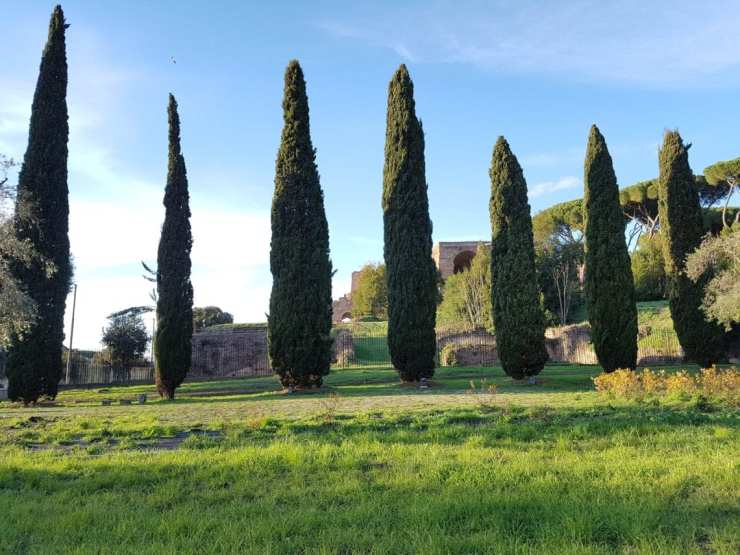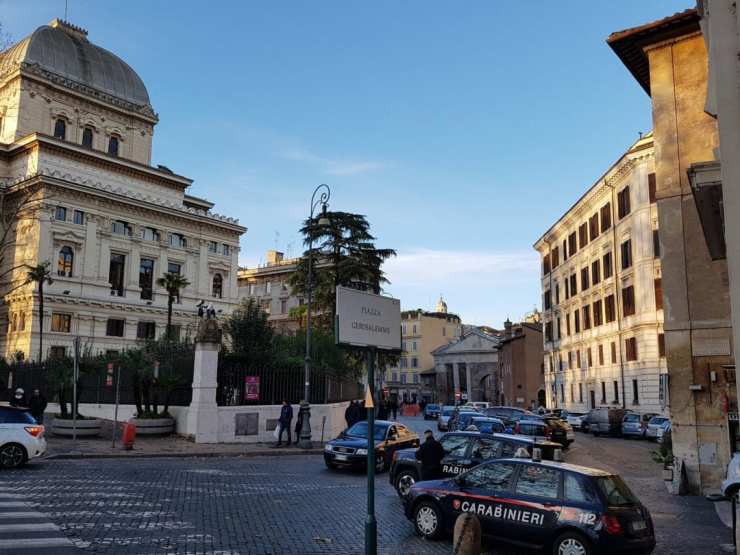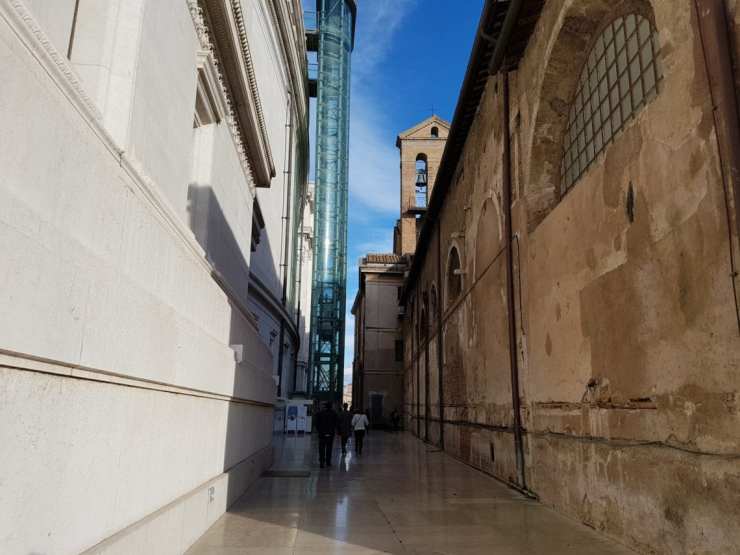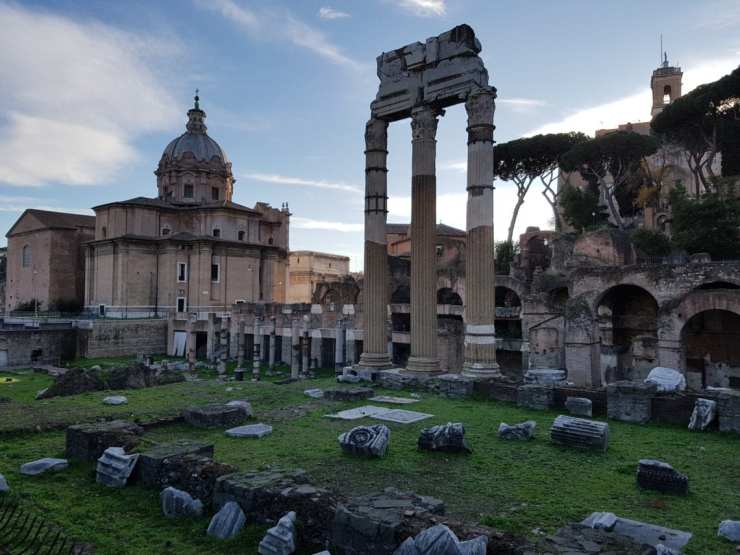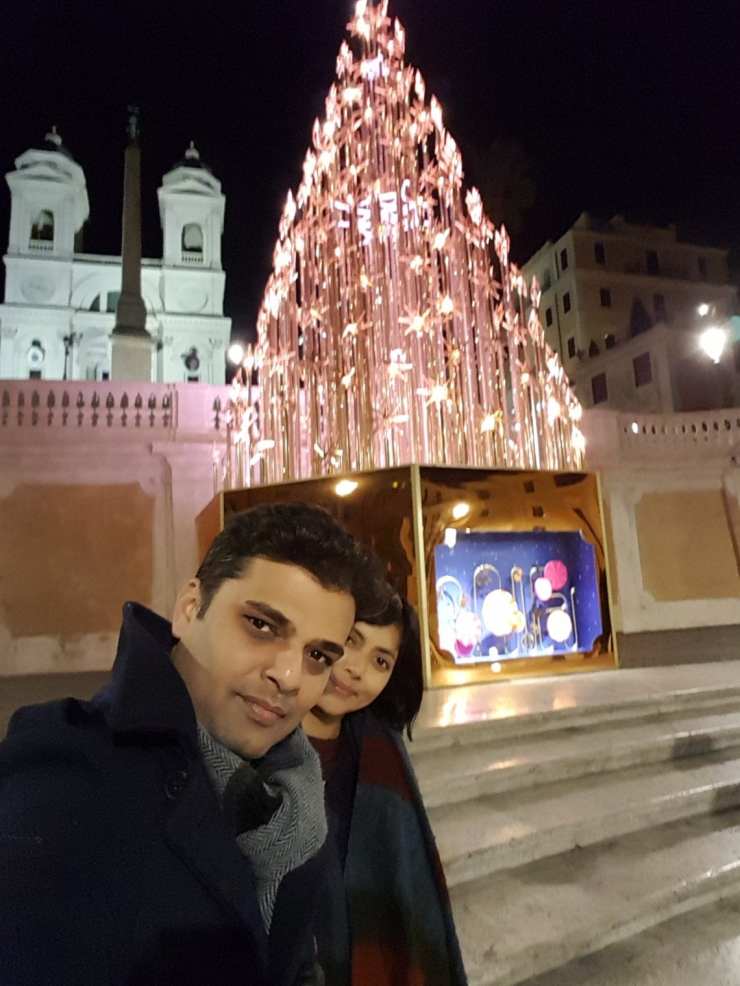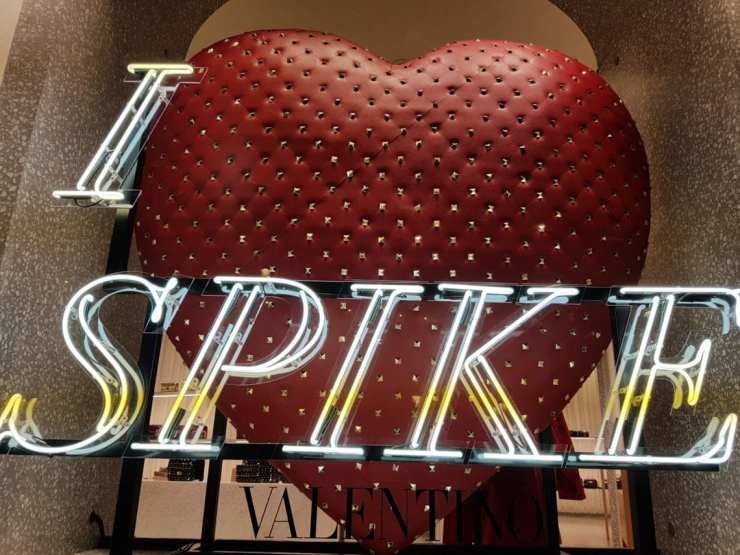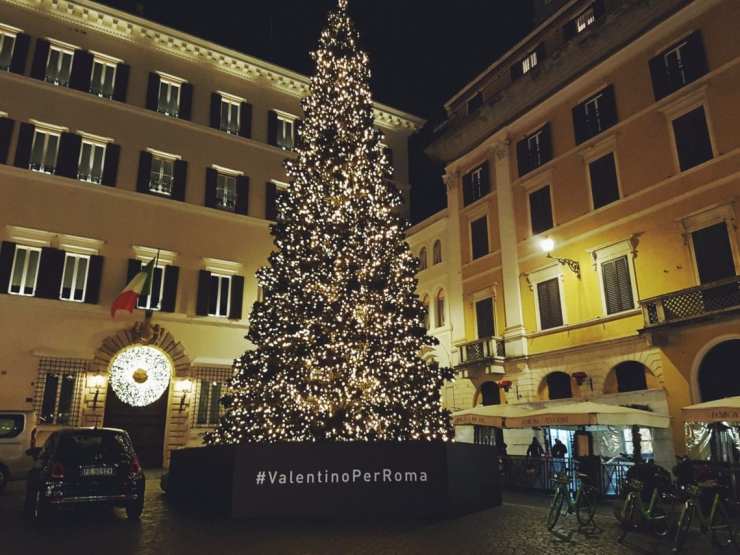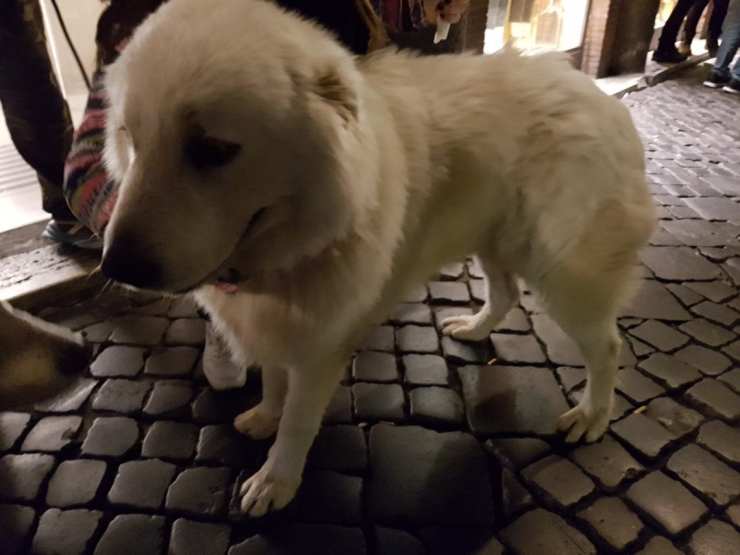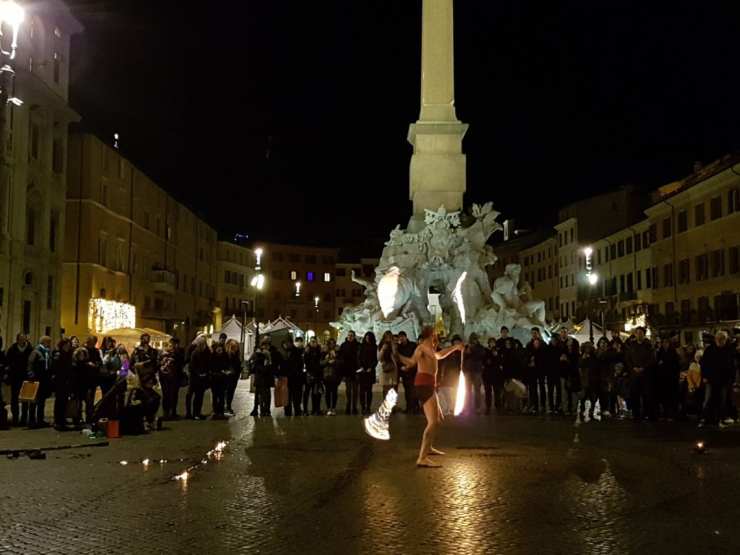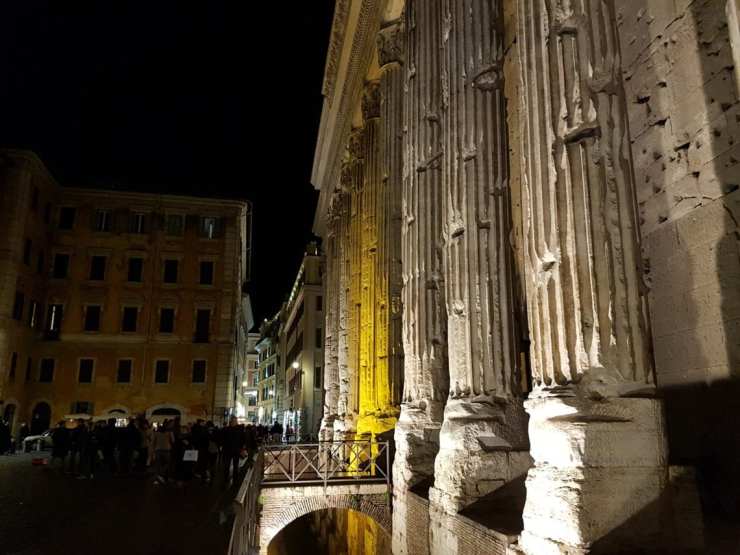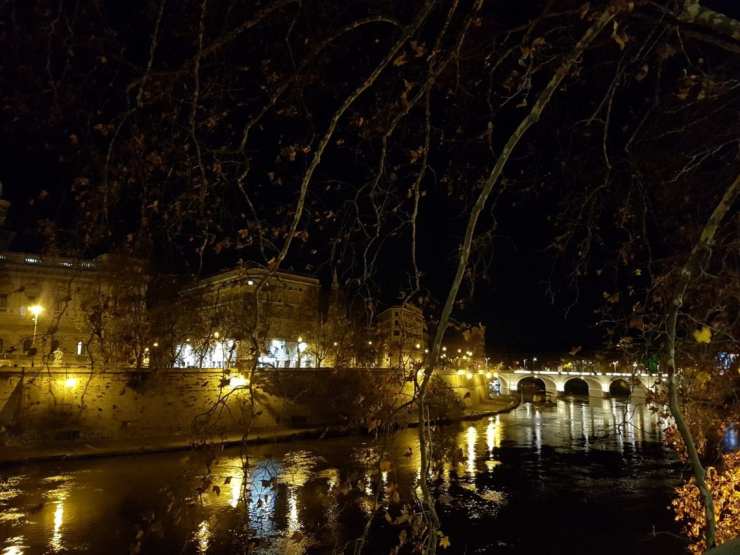In the tiny bakery known as Boccione within one of the oldest Jewish ghettos in Europe, we queued up for a slice of Jewish pizza. The woman at the till, her hair tucked carefully into a plastic cap, doled out a rectangular piece of dense cake which tasted more like a biscuit as the moreish taste of raisins, almonds and dried fruits came together in a a perfect ménage à trois of sorts. Then the beauty of butter. Eternity is encapsulated often within the briefest of moments.
A few metres from us was the atmospheric restaurant, Nonna Betta, which declares that Anthony Bourdain could deign to eat only within its august interiors in Rome. It is charming inside Nonna Betta. White walls, old-world wrought iron brackets for its equally old-world lamps and extensive murals splashed across the walls that portray what life would have been like in the ghetto before the 1800s. We did not lunch at Nonna Betta yet I could not resist a peep. Instead we meandered through the Jewish quarter, nibbling on rich fruit cake, taking in the quiet alleys where Jews have lived for 2,000 years, history etched into the stones of the buildings with their peeling plasters, facades chipped away by the inexorable passage of time.
Shutters, ribbed and fastened against e’en the honeyed beauty of the sun on the December winter afternoon that we drifted through narrow passages beneath balustrades of marble, our minds lingering upon the kind of stories that those passages must nurse, forgotten tales of people taking flight from persecution. Then there were enclaves that must have been thronged by the poverty-stricken multitudes. The Carmel Temple that you see in the lead photo must have been the repository of dark thoughts festering within repressed souls who in the 16th century had been commanded by the pope to attend ‘compulsory preaches’. How did the adult Jews combat such decrees you think? They plugged their ears with wax, yessir, because who wants to be told what faith to follow. If some dared to fall asleep, they were kicked by watchful papal guards to wake up. Pieces of history that crept up along the walk through The Ghetto.
A piece from a 17th century poem by a certain Giuseppe Berneri captures the misery of life in The Ghetto and it goes like this:
The Ghetto is a place located next to the Tiber
On one side, and to the Fish-market on the other;
It is a rather miserable enclosure of streets,
As it is shady, and also saddening.
It has four large gates, and a small one;
During daytime it is open, to let people out,
But from the evening until morning has broken
It is kept locked by a porter guard.
This marks the end of my series on Rome that was punctuated by that on Florence and my mind is quite ready to exit Italy (do I hear hurrahs at this point?) and enter India where I am currently staying at my parents’ for another week before I fly back home to Adi (Though I cannot promise you that I shall not bring forth photos from Rome and Florence all over again for I have such fond memories tucked into every nook and cranny there).

